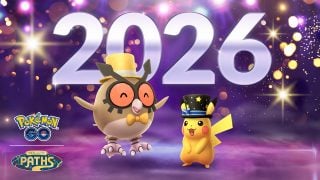If any one indie title has really struck a chord with me over the last decade, it was Oxenfree from Night School Studios. Focusing on a group of teens who accidentally open an otherworldly rift during an overnight beach party and their subsequent haunted adventure around Edwards Island, the game explored themes of loss, grief, and acceptance. The sequel, Oxenfree II: Lost Signals, looks to follow up on that surprisingly touching adventure by following environmental researcher Riley Poverly and an old acquaintance of hers, Jacob Summers, as they investigate strange events taking place in the coastal town of Camena, with Edwards Island looming just off the coast.
Dialing In
Oxenfree II: Lost Signals biggest gameplay draw is Night School’s excellent branching conversation system. Introduced in the first Oxenfree, the dialogue system presents you with three choices at just about every opportunity Riley has to speak, allowing you to pick how she responds, shaping her personality and helping her build, or damage, relationships, which can affect how the story plays out. Seeing this system make a return in Oxenfree II is a real pleasure, as it greatly personalizes the way that you play the game, and gives you plenty of opportunity to see something different every time you play through the game.
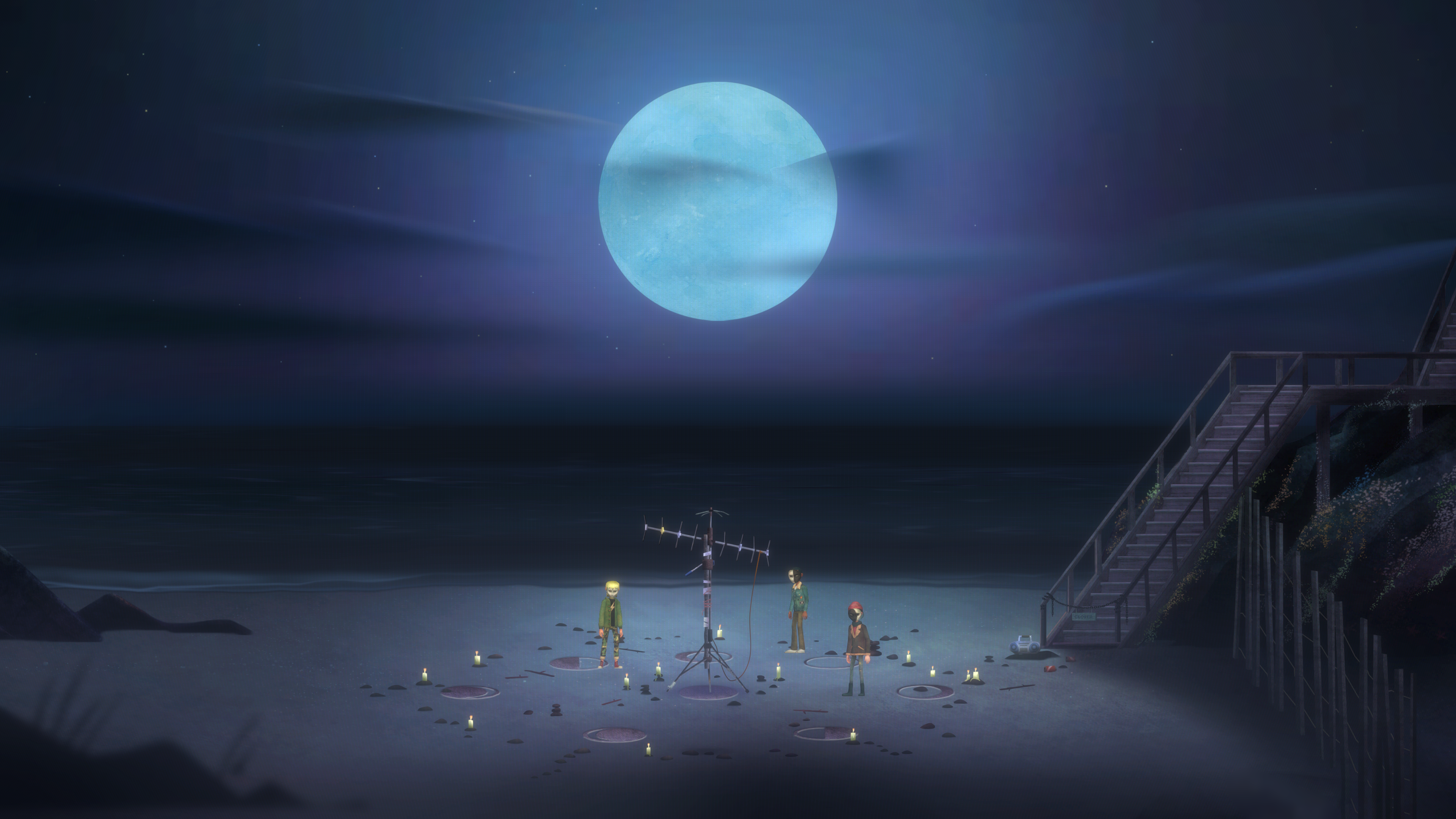
A nice quality of life improvement over the first game is the ability to carry on conversations as you move between areas. Instead of abruptly ending a conversation when moving to a new part of the map, Oxenfree II will alert you if that particular conversation will continue in the new location. This system is not perfect, however, as there were a few times that I followed the prompt and moved areas, only for a scripted story conversation to take over when the new area loaded, forever losing the back half of the conversation I was having. In the latter half of the game this led to me standing around waiting for conversations to finish before triggering the transition between areas, which I’m sure this system was designed to avoid.
The radio also makes a return in Oxenfree II, letting Riley listen to local radio stations, like the high school advice line or a broadcast of the local baseball game, among others. It’s great seeing the radio return, but I would have liked it if the radio had taken advantage of the Switch’s HD Rumble feature like it did in the first game. Ultimately it’s not game-changing, but I missed feeling the click of each station I scrolled past when using the radio.
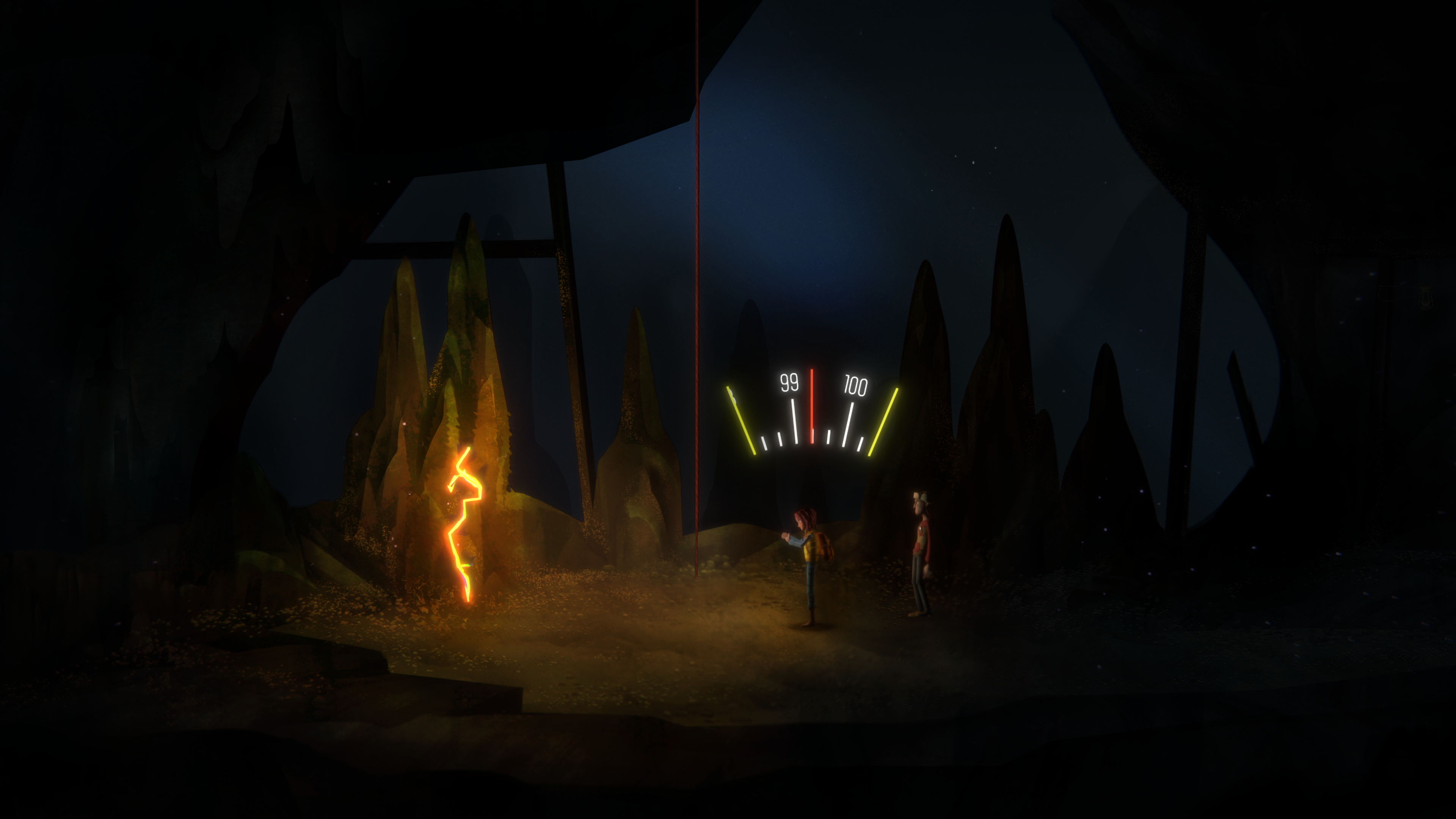
The radio also allows Riley to tune into parts of the environment or other strange phenomena around Camena, solving puzzles and opening locks, or opening up time tears, portals into the distant past that can allow Riley and Jacob to find their way around obstacles. Take, for example, a mineshaft elevator that’s broken down in the present, but was functional in the late-1800s. By finding a nearby time tear and tuning into it with the radio, you can use the elevator in the past to reach higher ground when you come back to the present. Time tears are an interesting addition to Oxenfree II, and I loved having to figure out exactly how to use each one I came across to solve some puzzle I was facing – the only problem was that in the grand scheme of things, they were a little too few and far between. I would have loved a few more time tear puzzles scattered around Camena that would have required me to travel in time to solve.
Oxenfree II: Lost Signals also features a brand new tool at your disposal, the walkie-talkie. Riley can use the walkie-talkie to keep in touch with characters that aren’t on-screen, and will even get calls from strangers asking her for help, triggering brief sidequests if you decide to help them. I wasn’t sure how to feel about the walkie-talkie at first, I felt that being open to interruption by characters not central to the story would detract from the overall narrative, but I came to find that without a larger cast of on-screen characters, the walkie-talkie added a lot of substance to Oxenfree II that wouldn’t have been present otherwise. The random pop-in conversations from new characters asking for help were balanced extremely well with the larger narrative, and gave plenty of opportunities to help humanize Riley.
Should I Stay or Should I Go?
I’m coming to find that one of Night School’s greatest strengths is their ability to craft meaningful character relationships while still giving the player space to decide how they want these characters to treat each other. I spent my first Oxenfree II playthrough making Riley extremely sympathetic to everyone she came across, making choices to reassure other characters in moments of doubt or to believe any wild stories they might be telling. My second playthrough, which I’m still in the middle of, Riley is a bit more blunt, and angry, and is skeptical of all of the strange happenings going on around her. Oxenfree II allows for both of these styles, and more, to be valid ways to play, and each dialogue choice and the other characters’ reactions to them are believable in a way that makes the game enjoyable no matter which you pick.
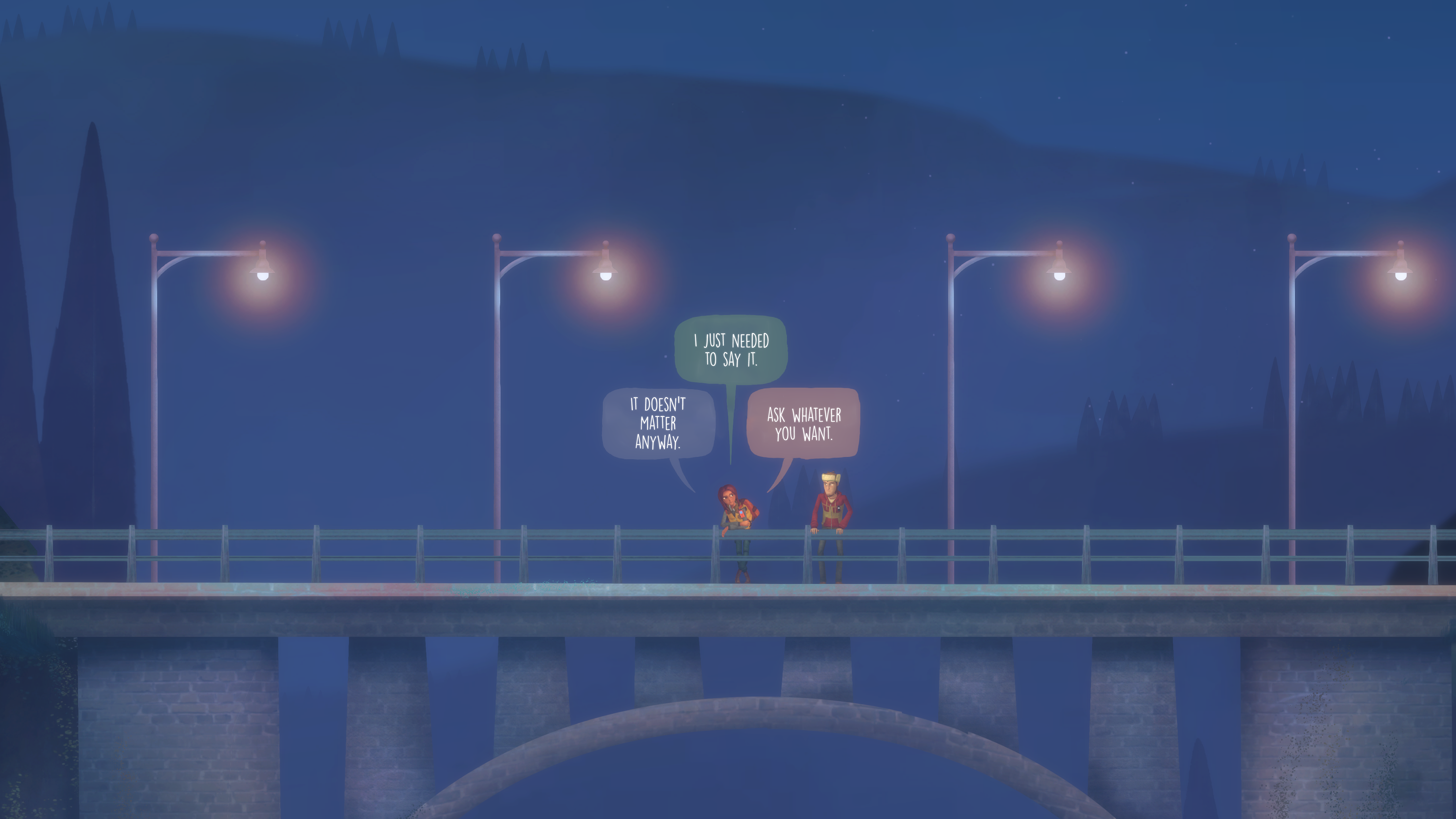
In the same way that the first Oxenfree tackled topics like grief and loss, Oxenfree II looks at why people choose to stay in or choose to leave hard situations, and explores why both staying and leaving can be right, depending on the person. Early on Riley and Jacob discuss why Riley left Camena after high school, why Jacob stayed in Camena, and why Riley chose to return now, all these years later. During this conversation, if you question Jacob about whether he’s happy he stayed or not, he remarks “I am content, but… you never know how content you’d be if you did things differently, right?” This theme of regret about what could have been, and what you can do now to make up for it, really resonates throughout Oxenfree II’s story and proves, yet again, that Night School is expert at tackling deeper topics alongside their gameplay.
Scientific Sounds
Night School brought back scntfc to compose Oxenfree II’s soundtrack, which I was very happy to hear when it was announced, as scntfc is responsible for the excellent Oxenfree and Afterparty soundtracks. Unfortunately, the soundtrack for Oxenfree II: Lost Signals didn’t immediately stick with me the way that scntfc’s previous Night School soundtracks did. Not to say that the soundtrack itself is bad, it adds plenty of mysterious ambiance when needed, and the more upbeat tracks make treks across Camena feel more adventurous, but the soundtrack just didn’t “pop” the way I was hoping it would.
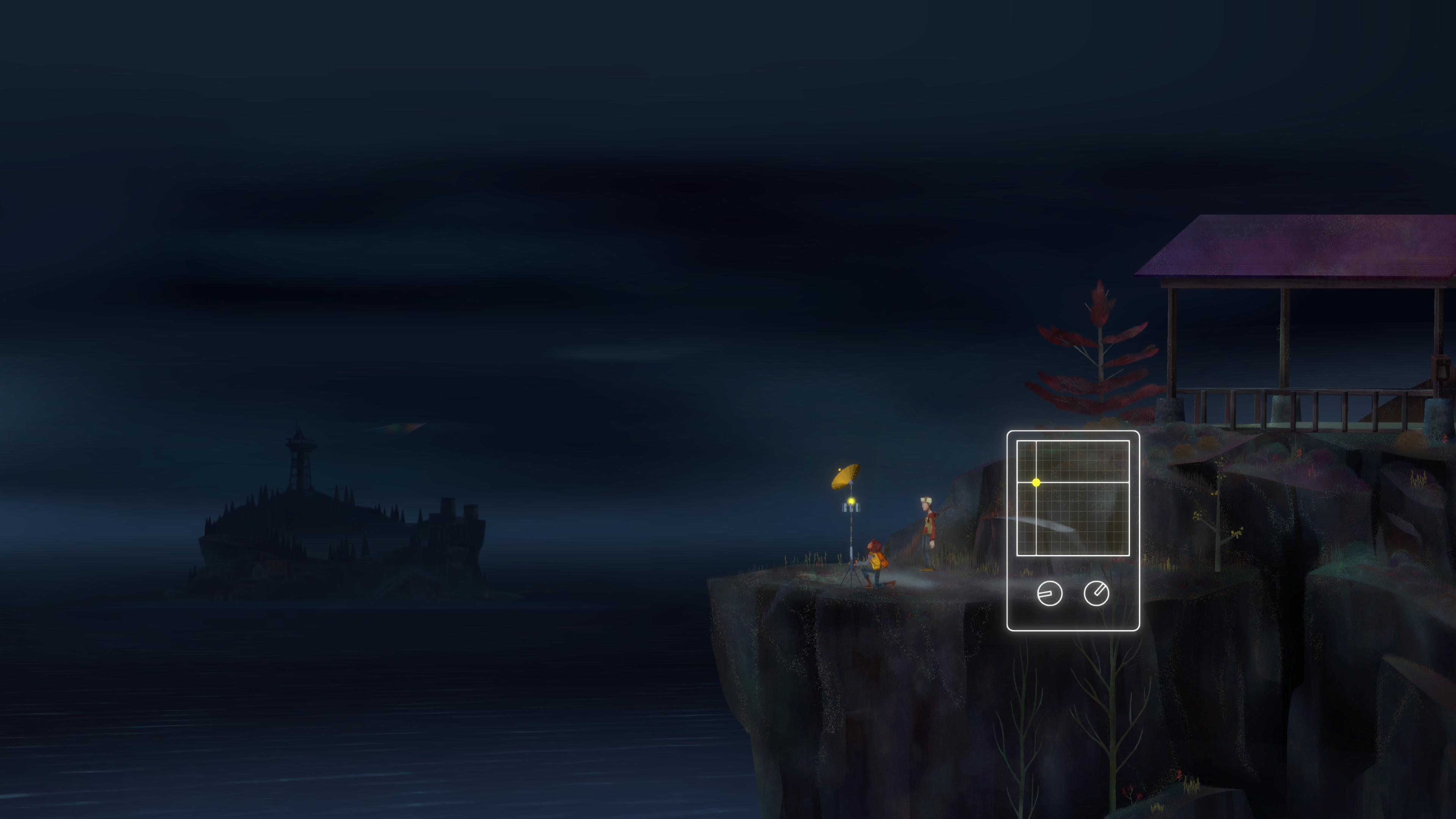
Transmission Triumphs
Oxenfree II: Lost Signals’ performance on Switch is a huge step up from previous Night School games on Switch. Loading times are, by and large, quick. The game looks nice and crisp in handheld and docked modes, and I have yet to experience any stuttering or freezing in either of my playthroughs of the game. There was a brief moment at the end of my first playthrough where Jacob became unable to follow me across gaps or jump up or down any ledges, effectively getting him stuck in place, though this wasn’t a detriment to my playthrough at all, as all conversations continued as normal. A quick reset of the game fixed the problem, and it didn’t occur again.
All The Outs in Free
Finally having Oxenfree II: Lost Signals in my hands after so many delays is incredibly gratifying, given how much I loved the first game. Its exploration of the themes of regret, leaving vs. staying, and living up to your potential is woven deftly into its spooky story and exploration-based gameplay. The decision to have two adult main characters rather than following a group of high schoolers the whole time again is a nice contrast to the first game, and shows that even us grownups don’t have it all figured out, as much as a lot of us pretend that we do. Revisiting the world of Oxenfree was a delight, through and through, and I will always be grateful to Night School for giving Oxenfree a sequel that lives up to its predecessor.
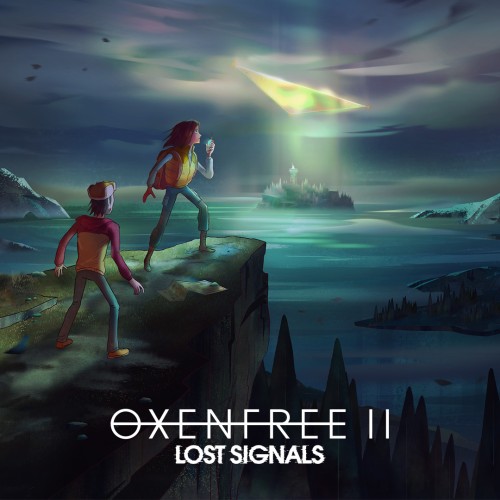
System: Nintendo Switch
Release Date: July 12, 2023
Categories: Adventure
Publisher: Netflix
Developer: Night School Studio


